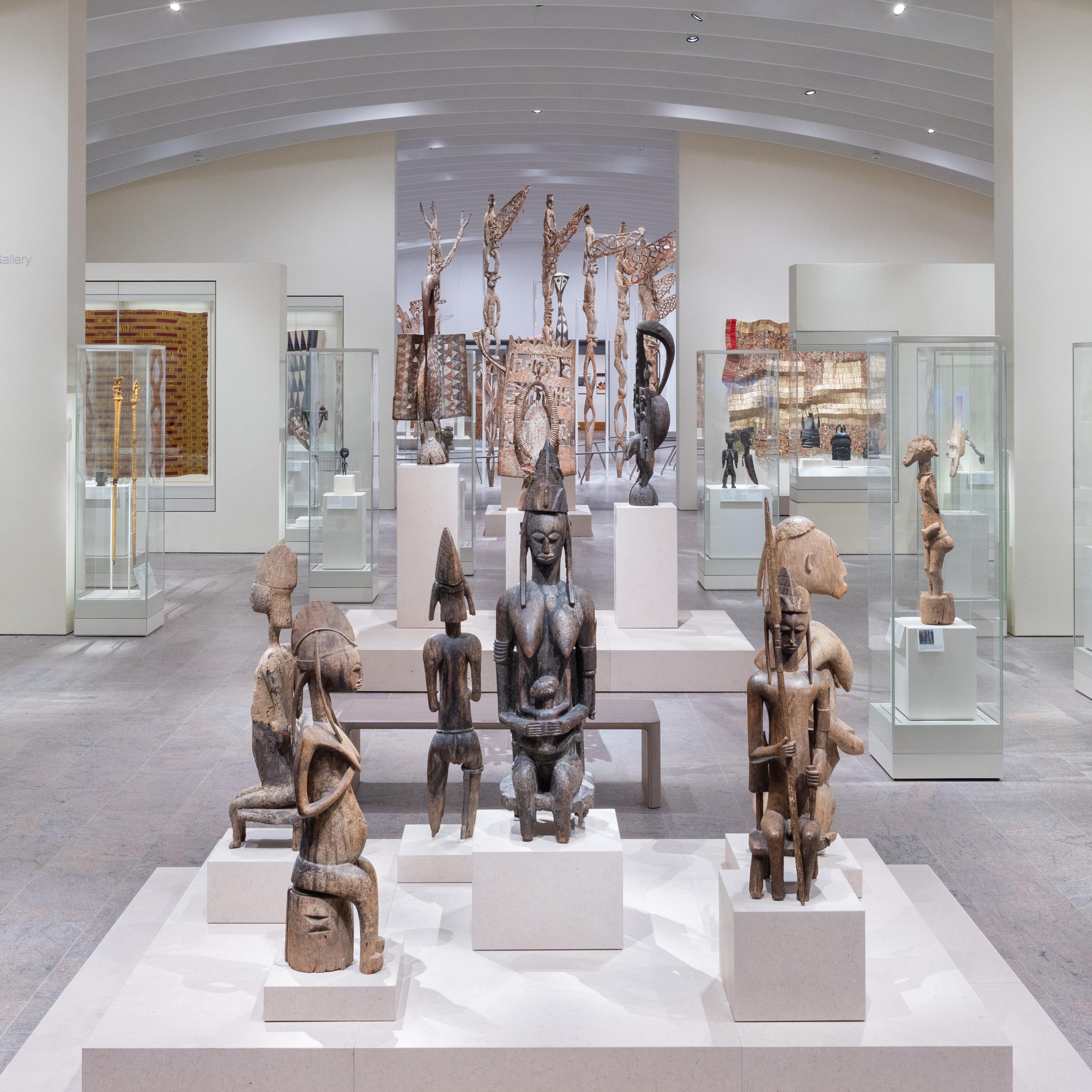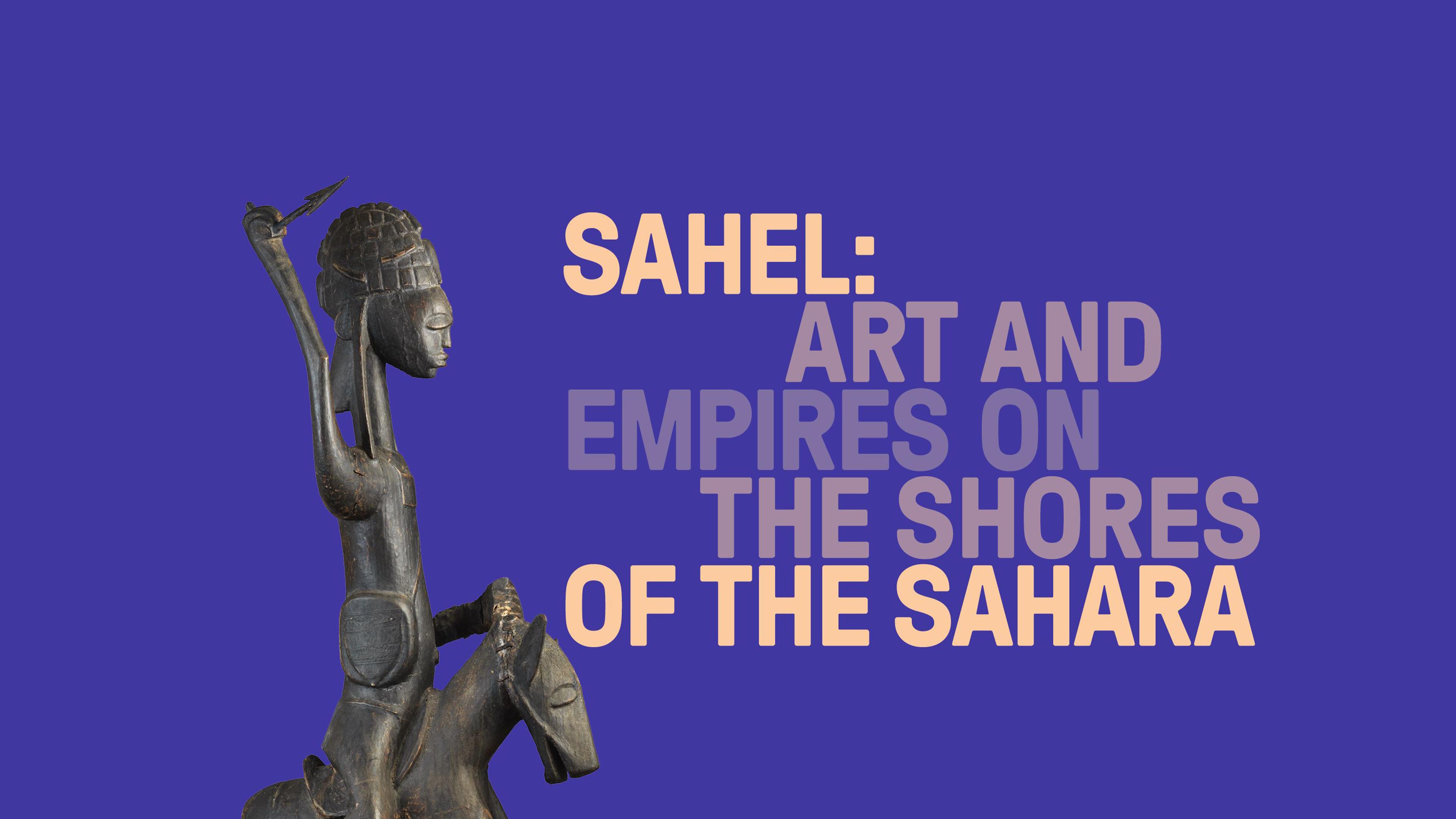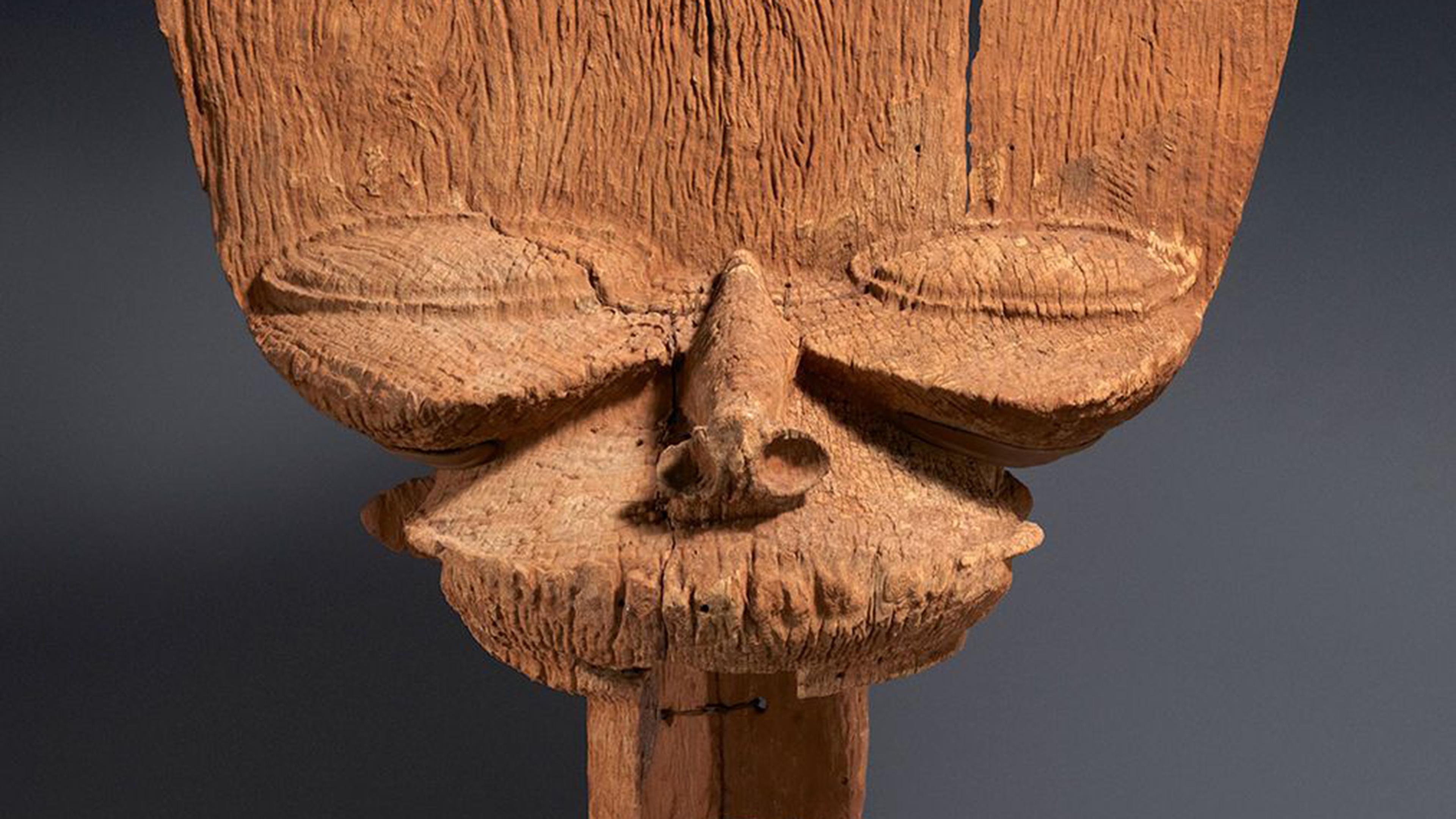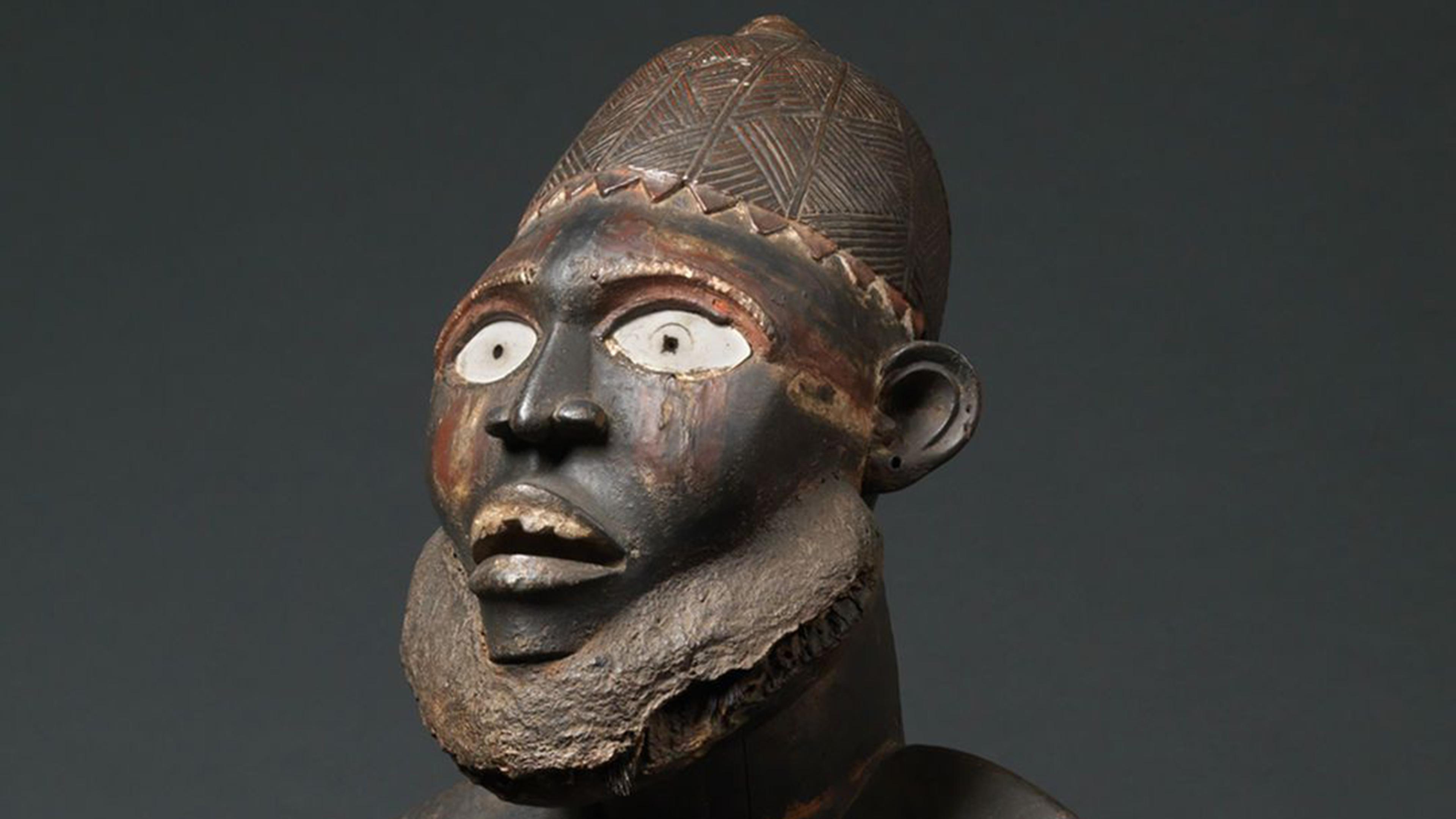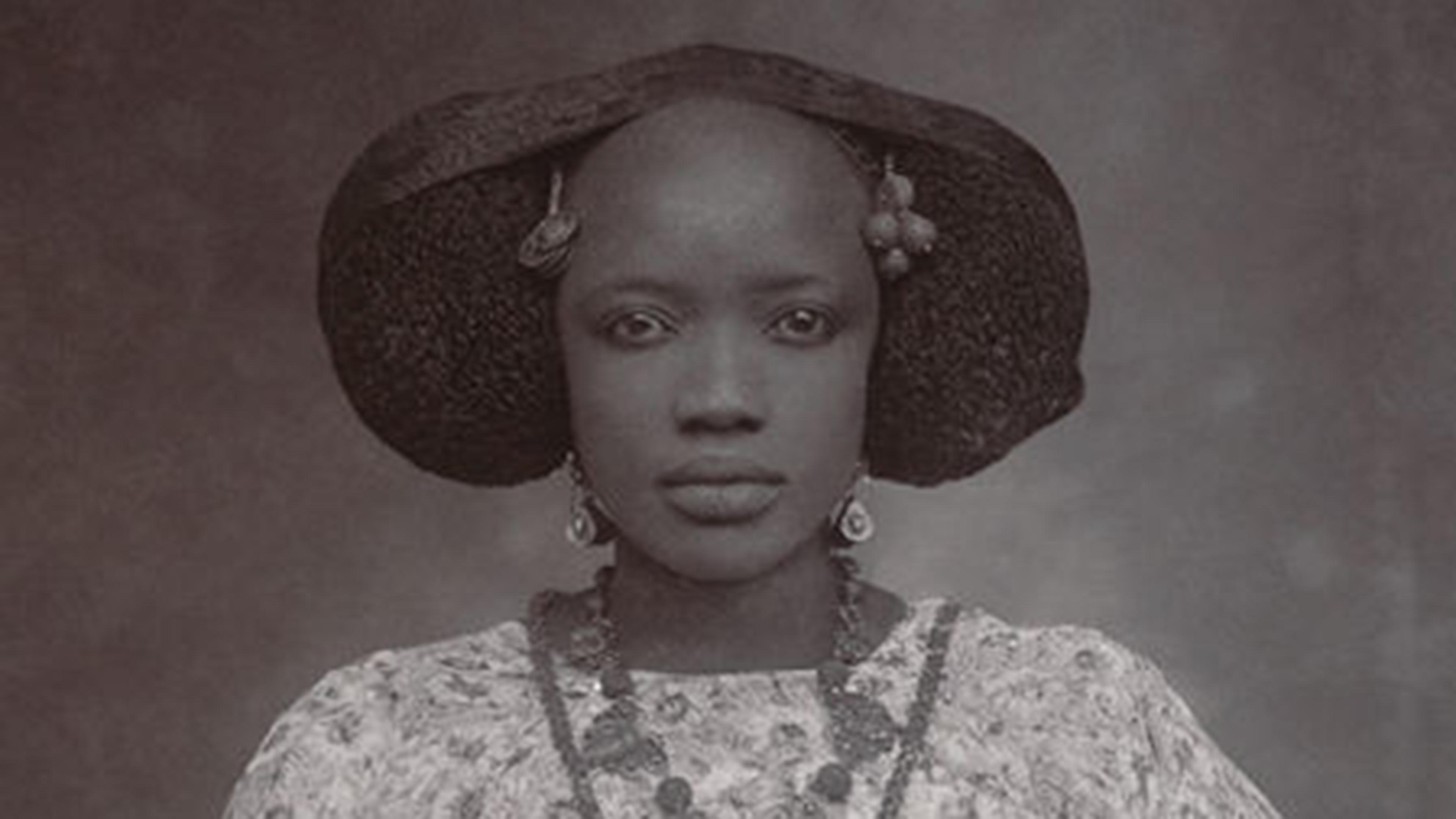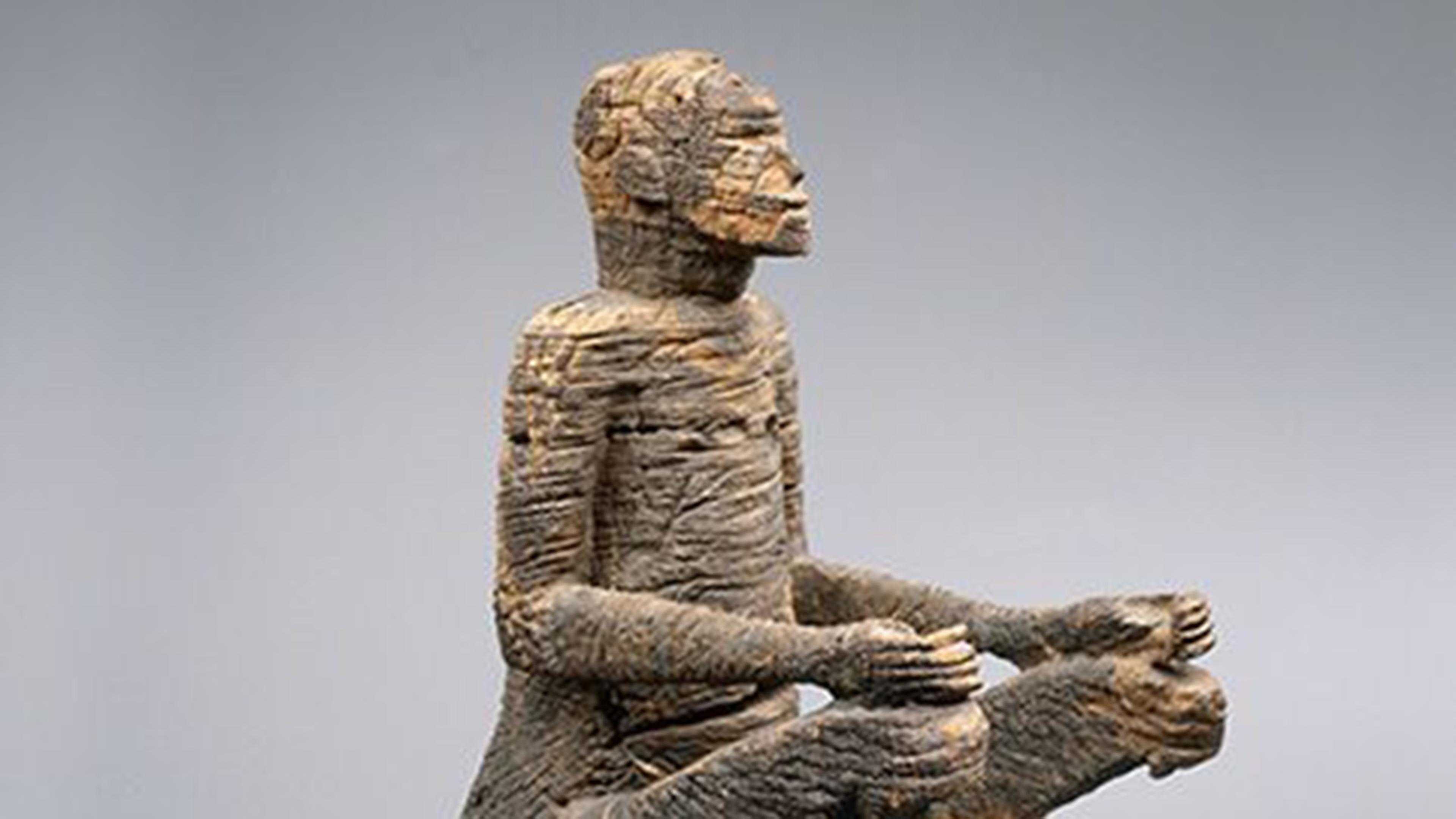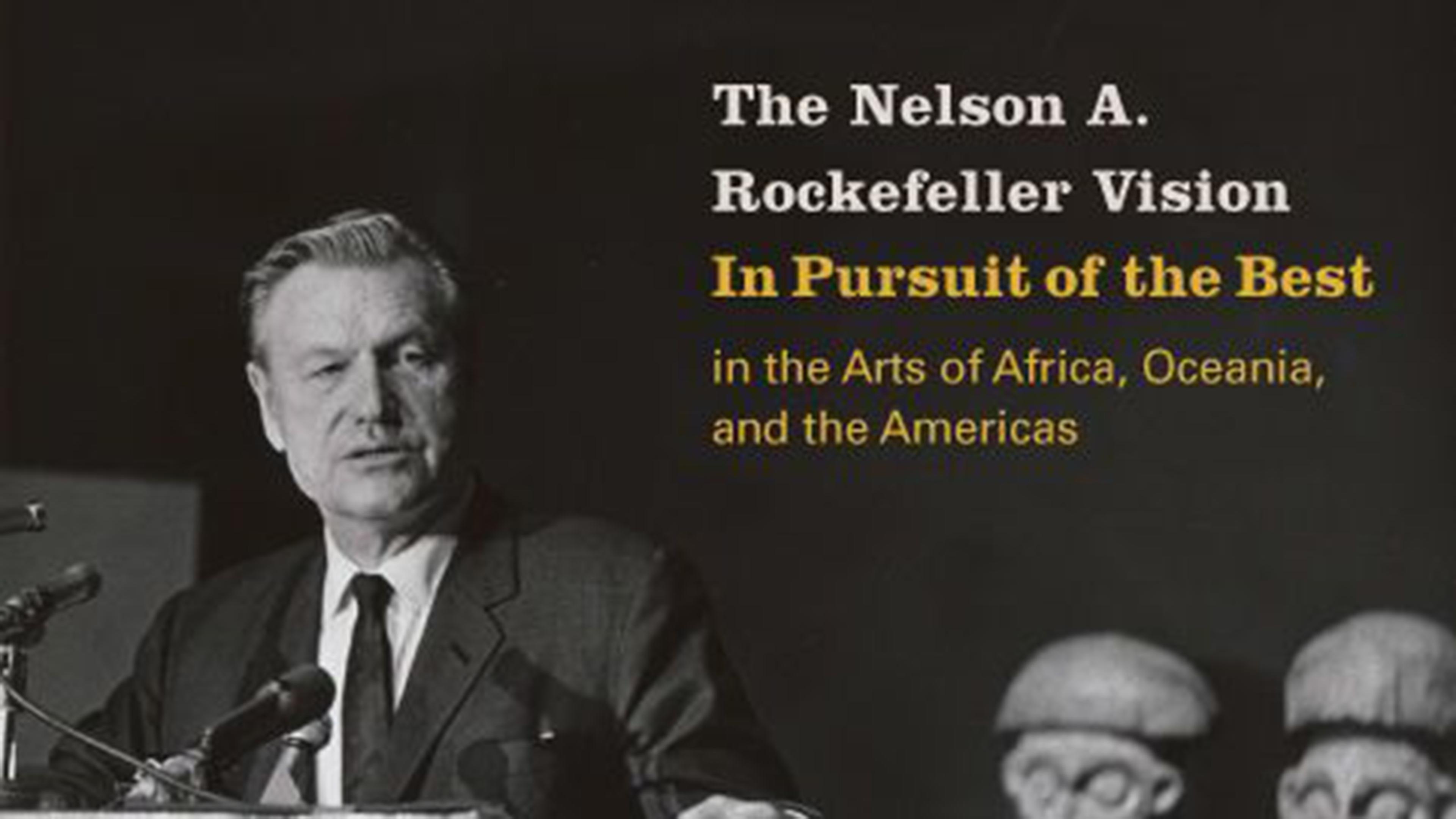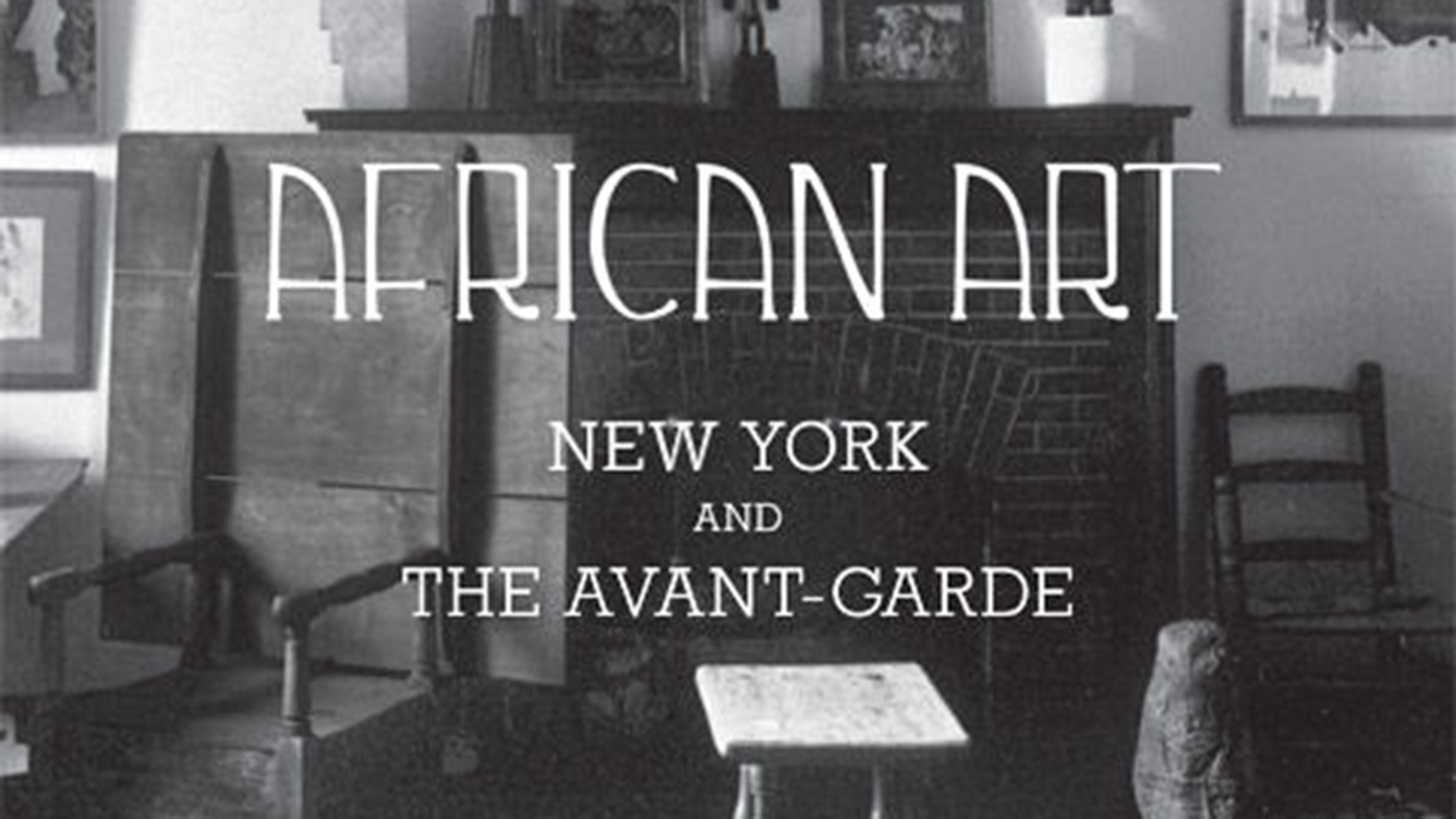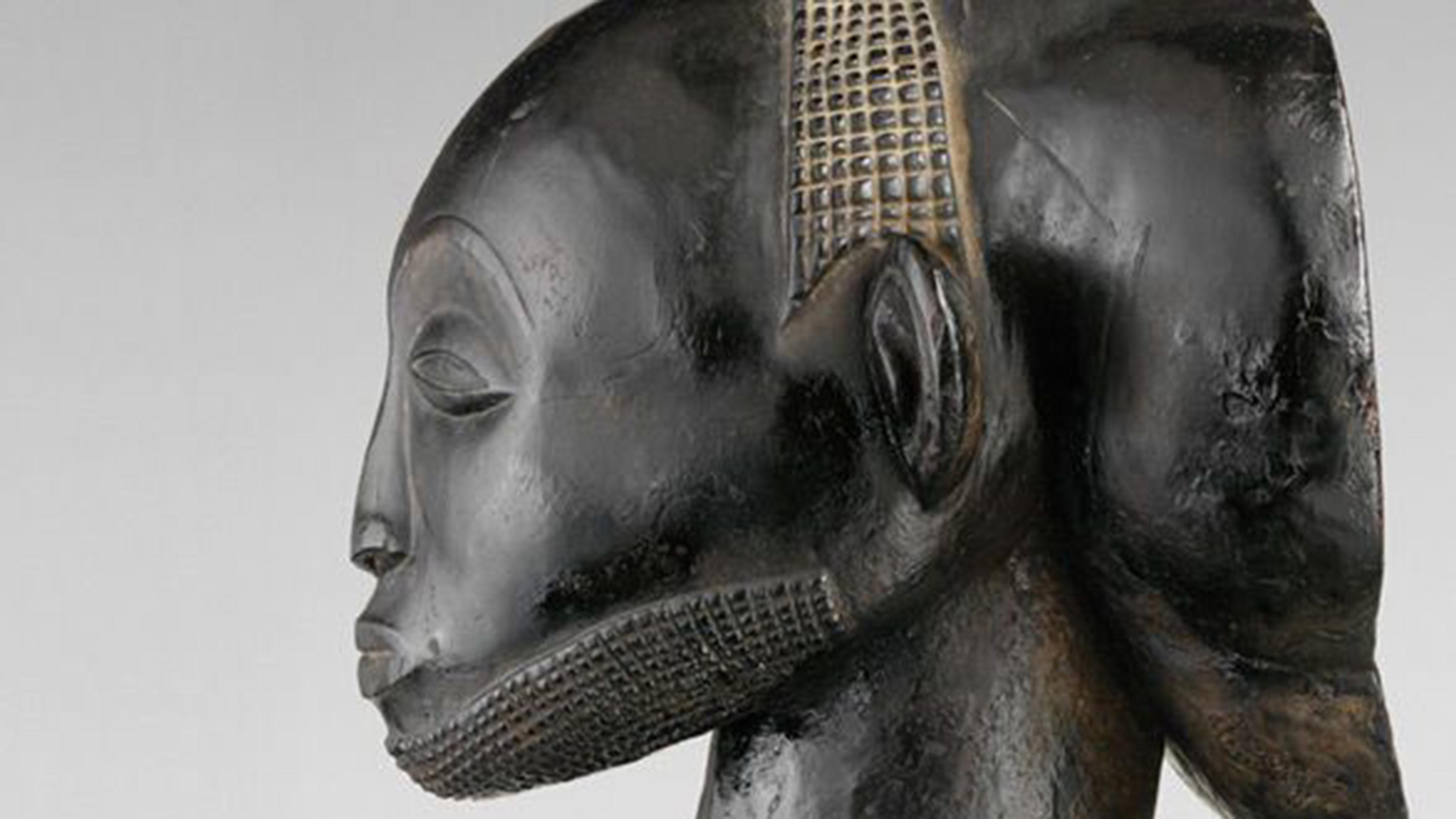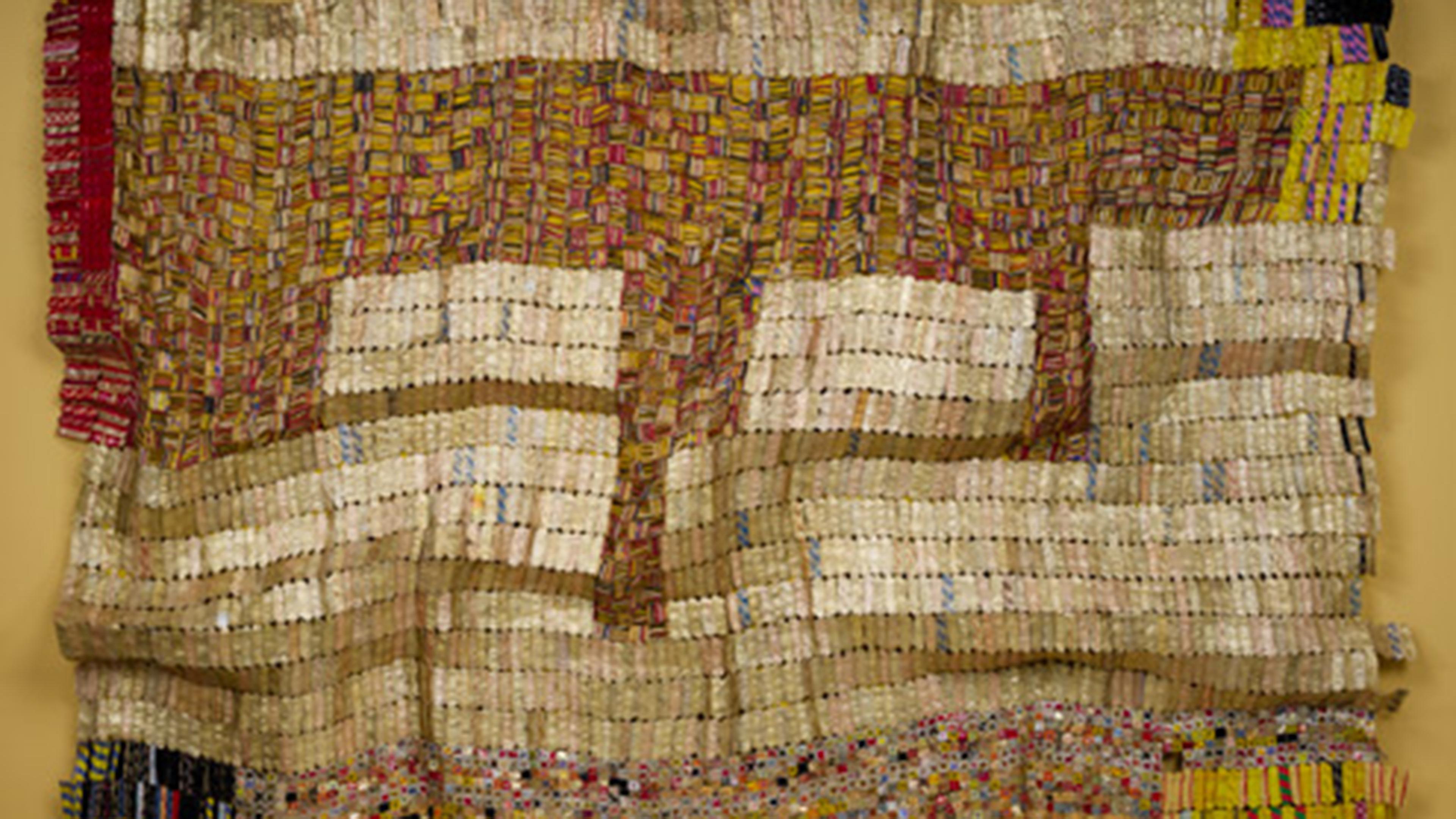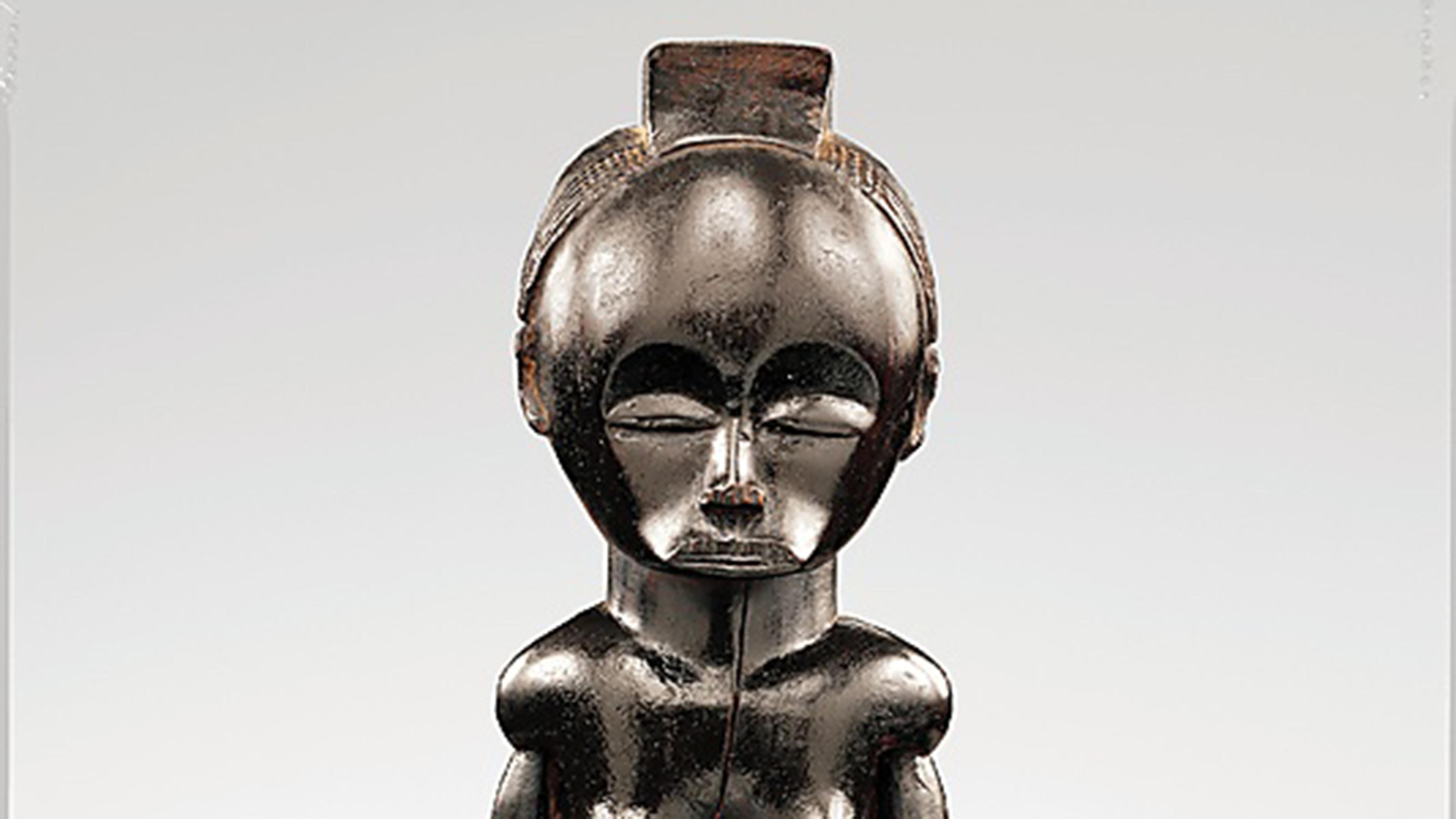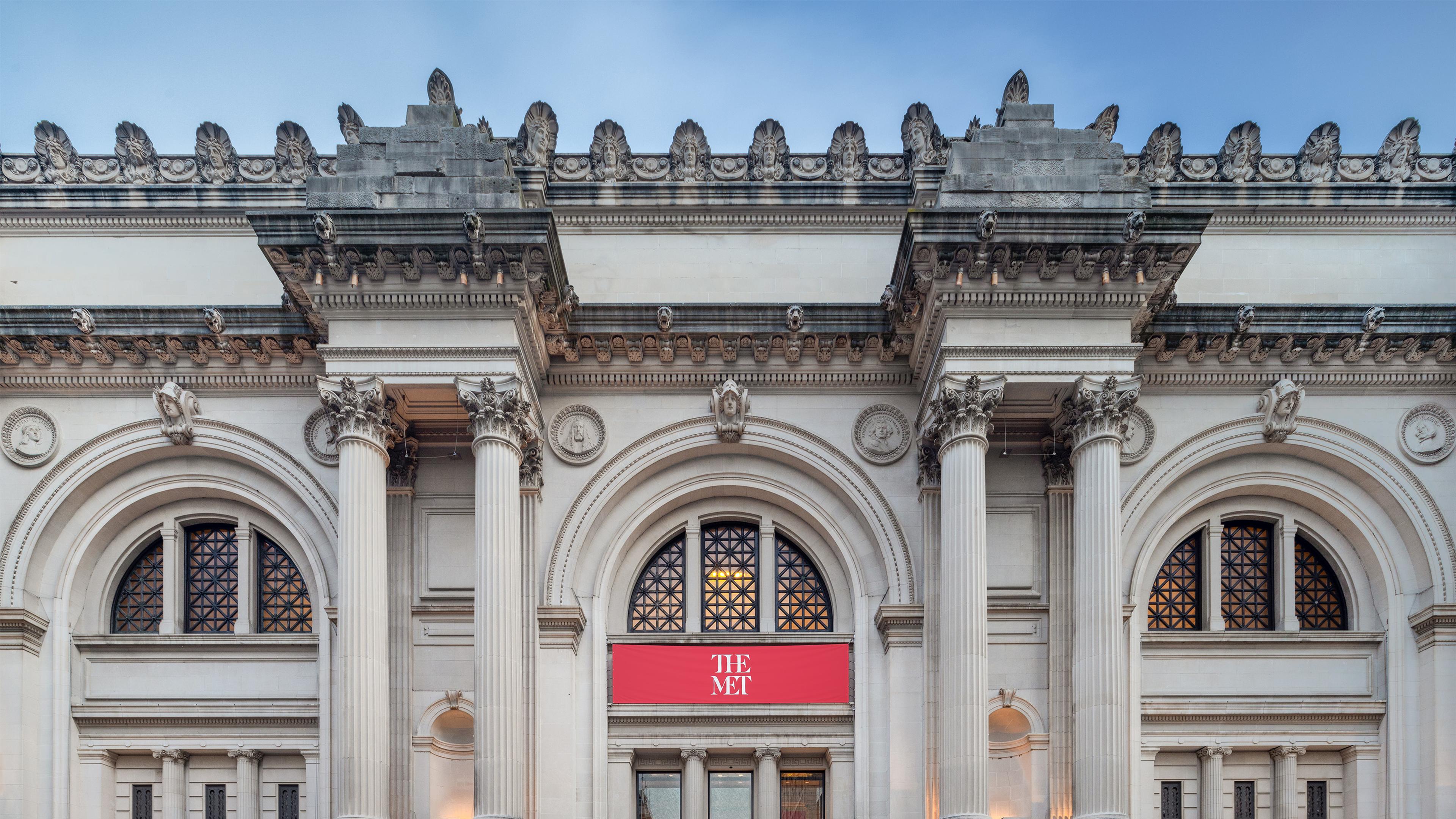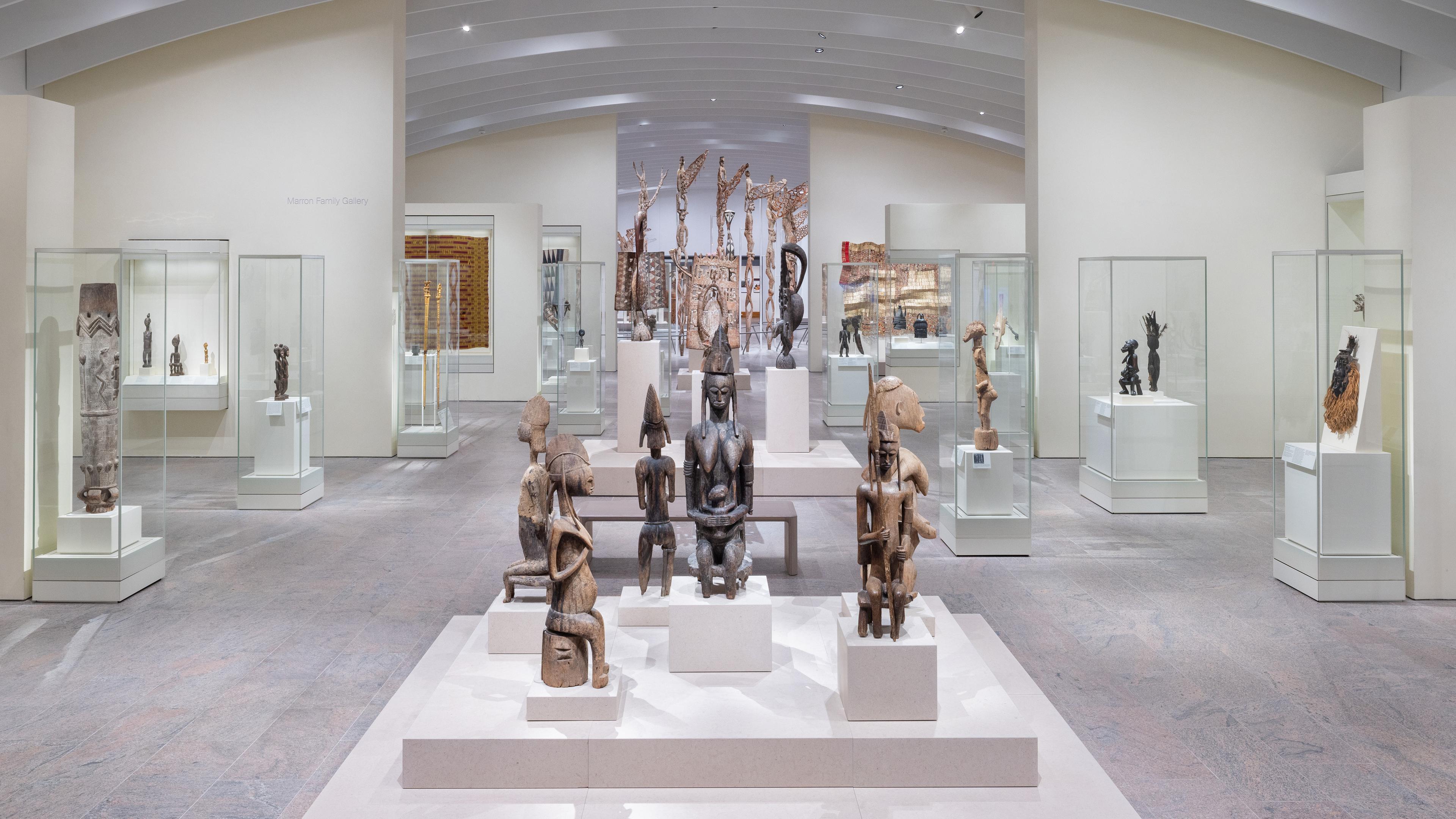
African Art in The Michael C. Rockefeller Wing
About Us
Works from across the African subcontinent in The Met’s collection span a fired clay figure shaped in Mali's Inner Niger Delta in the thirteenth century to the fiber creation, LES HERBES FOLLES DU VIEUX LOGIS (2022), by contemporary Malagasy innovator Joël Andrianomearisoa. Major forms of visual expression surveyed relate to traditions of portraiture, dynastic succession, generational rites of passage, ancestor veneration, healing and divination, and theatrical performance. Their authors have contributed to major social and cultural developments, including the flourishing of urban centers such as ancient Jenne, evident in devotional sculpture sponsored by its citizenry; the arrival of Islam through trans-Saharan trade reflected in decorative arts ranging from tunics to architectural design; the early embrace of Christianity by Ethiopian monarchs and their sponsorship of liturgical works; the dawn of coastal trade with Europe and the exchange of exotic presentation pieces wrought from locally sourced ivory for imported luxury materials; a transformation in representation and the development of modernism in the West; and dynamically resilient historical traditions that endure into the present day.
In addition to printed gallery labels and web labels, there are several layers of digital content, including an audio guide with contributors from across Africa, Europe, and North America, an animated digital map, and a film series dedicated to cultural landmarks in Africa.
In 1969 Nelson Rockefeller announced the gift of his collection of some five hundred works from sub-Saharan Africa to The Met. These were mostly figurative sculpture from West and Central Africa. The Michael C. Rockefeller Wing, which was built to display the collection, opened to the public in 1982. Additional gifts have deepened the collection and expanded its parameters, reflecting the importance of recognizing the innovative nature of historical traditions in our own time and major idioms of visual expression ranging from textiles to Ethiopian Christian art and decorative arts from southern Africa.
Since its founding, presentation of the arts of Africa collection in the Michael C. Rockefeller Wing has been accompanied by an extensive program of African art exhibitions. Beginning with The Buli Master and Other Hands (1980), these have examined the significance of landmarks of its permanent collection. Sustained research projects assembling international loans, such as 2021’s Sahel: Art and Empires on the Shores of the Sahara, have regularly advanced and expanded understanding of major thematic and historical subjects.
The online collection features high-resolution, open-access images of works in the collection, along with cultural and chronological information. These object records—an ongoing research project—also provide data on the history of works from the time of their creation to their acquisition by the Museum.
For further reading on the history of the department, see Making The Met: 1870-2020 and The Nelson A. Rockefeller Vision: Arts of Africa, Oceania, and the Americas.
In 2025, the new galleries for the arts of Africa reopened after a decade-long capital project. Learn more about the renovation here.
Films Exploring the Importance of Cultural Landmarks in Africa
Africa’s Cultural Landmarks is a series produced by The Metropolitan Museum of Art in collaboration with World Monuments Fund and directed by Sosena Solomon. These short documentaries direct a local lens on some of Africa’s most notable cultural landscapes.
Art
Articles, Audio, and Video
Featured
Now open! Discover The Met’s new Michael C. Rockefeller Wing, featuring the Museum’s collections of the Arts of Africa, the Ancient Americas, and Oceania.
Learn about The Met's new initiatives, public programs, exhibitions, and more that are part of an ongoing commitment to incorporate contemporary voices and perspectives from Africa.
Celebrate the renovation and reopening of the Arts of Africa galleries in the Michael C. Rockefeller Wing.
The Latest
Kongo Christianity: The Intersection of Two Worlds
- Video
Exhibition Tour—Arts of Africa | Michael C. Rockefeller Wing
- Video
A Film Screening and Conversation on Africa's Cultural Landmarks | Michael C. Rockefeller Wing
- Video
New Galleries/Fresh Perspectives—A Conversation About Presenting Africa’s Cultural Landmarks
- Africa’s Cultural Landmarks | Video
Sikien of Koutammakou, Republic of Benin and Togo
- Africa’s Cultural Landmarks | Video
Great Zimbabwe, Zimbabwe
Research
Enjoy a selection of short films from a newly produced series on sub-Saharan Africa’s distinct landmarks and behind-the-scenes stories of the filmmaking process.
Exhibitions
Press the down key to skip to the last item.
